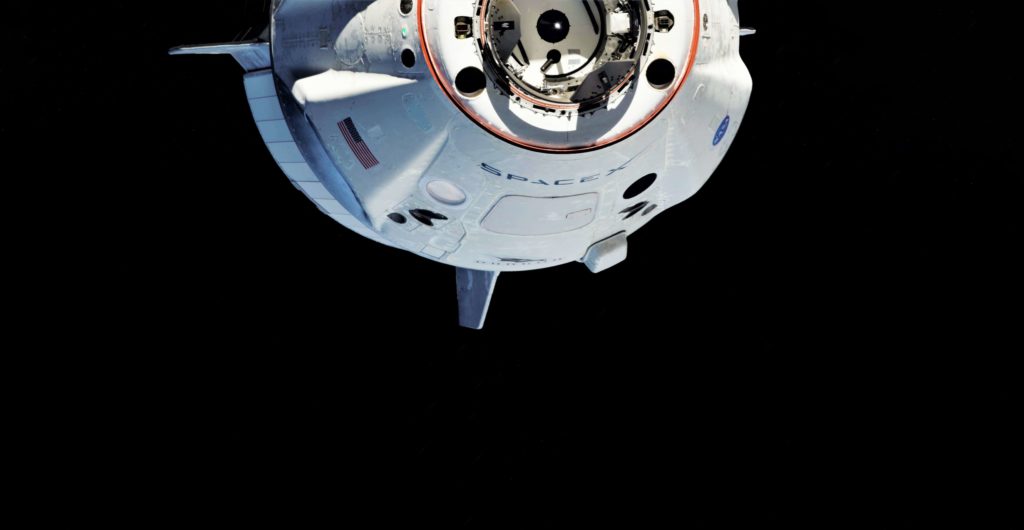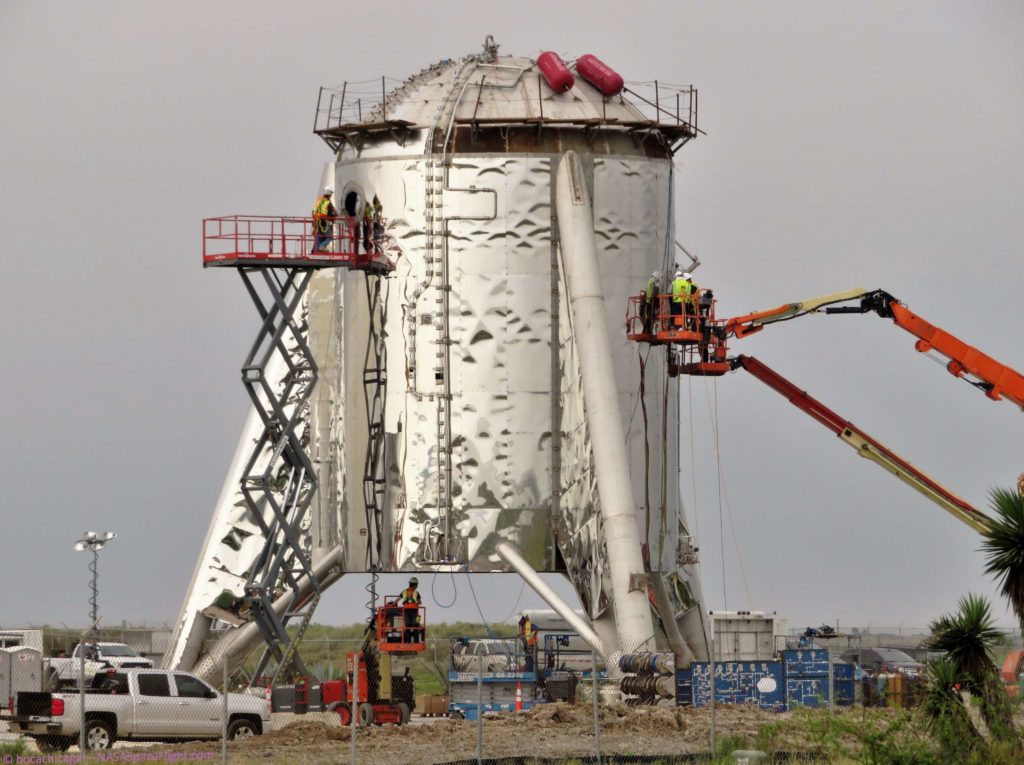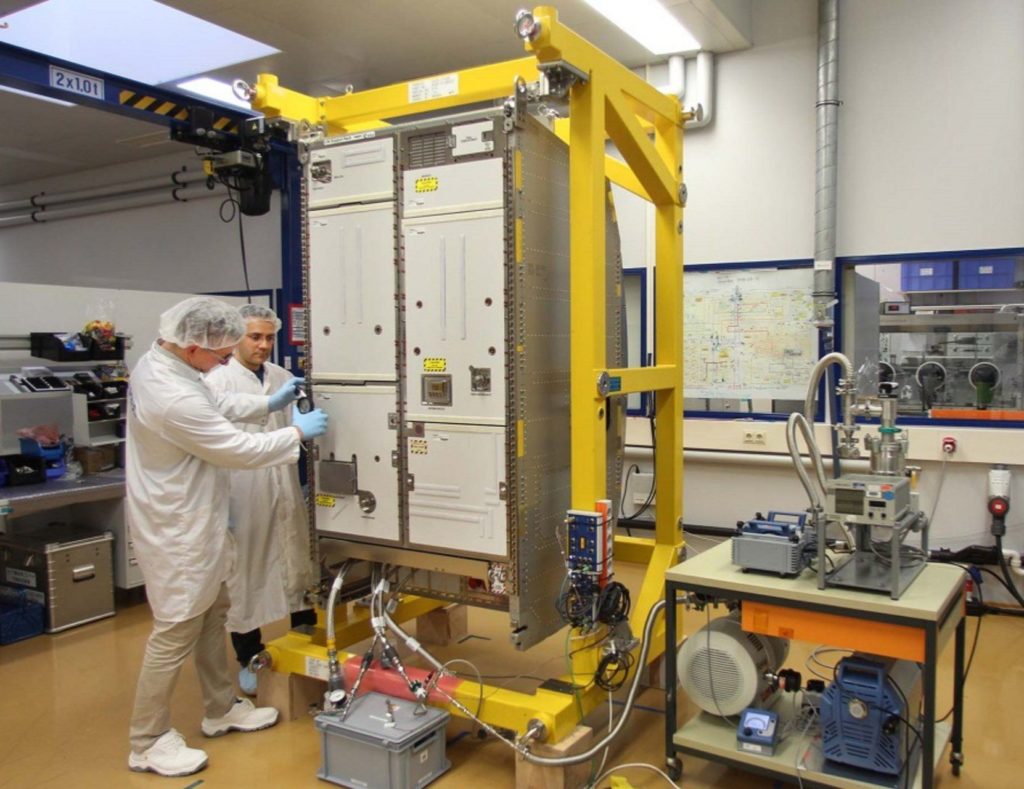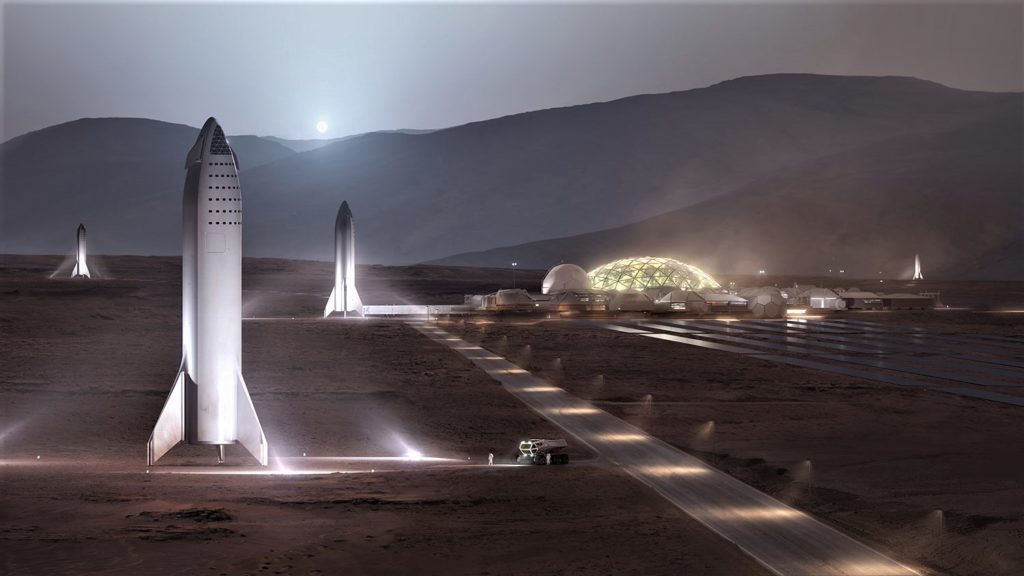News
DeepSpace: SpaceX takes huge step towards Mars with flawless Crew Dragon performance

This is a free preview of DeepSpace, Teslarati’s new member-only weekly newsletter. Each week, I’ll be taking a deep-dive into the most exciting developments in commercial space, from satellites and rockets to everything in between.
If you’d like to receive DeepSpace and all of our newsletters and membership benefits, you can become a member for as little as $3/month here.
While the mission is not done just yet, SpaceX is days away from (hopefully) wrapping up an extraordinarily smooth debut of its newest spacecraft, a human-rated vehicle known as Crew Dragon. Assuming no anomalous behavior during reentry, descent, and landing this Friday, SpaceX will likely be less than six months away from launching its first astronauts to the International Space Station (ISS), the most important step yet towards offering reliable and routine transport to Earth orbit and ultimately between Earth and Mars.
Founded by Elon Musk to kickstart a stagnant space industry and drive humanity to become an interplanetary species, SpaceX is in the process of building the first full-scale prototype(s) of the launch vehicle (Super Heavy) and spacecraft (Starship) it believes will deliver on those promises. Along with countless programmatic and technical lessons learned, every conceivable aspect of Crew Dragon’s development will feed directly into SpaceX’s development of Starship, meant to one day safely transport and land as many as 100 passengers on the surface of Mars.
A spacefaring civilization, one step at a time
In the process of building Crew Dragon, SpaceX has been forced to become rising experts in fields like human-rated environmental control and life support systems (ECLSS), as well as ensuring an even more extreme level of redundancy and reliability compared with SpaceX’s already high standards for their uncrewed Falcon rockets and Cargo Dragon spacecraft.
- More so than any particular piece of technology present on Crew Dragon, the process of both cooperating and grappling with NASA to build the spacecraft to high standards and ‘certify’ it has hopefully had an extremely positive impact on SpaceX’s own engineers and company-wide standards, albeit potentially at the cost of some of the willingness to take risks and move quickly.
“I’m personally convinced that this has made, certainly, SpaceX better, to have NASA guide us, and to look at requirements, and to try to question requirements, and what’s the true reason behind those requirements, and then basically comply with the overall safety culture that NASA taught us, I would say, to some extent. And so I feel like it certainly made a better SpaceX and made better engineers out of the SpaceX engineers. And I really appreciate that very much.”
-Hans Koenigsman, Vice President of Mission Assurance, SpaceX
Feet in Earth orbit, head in the Martian clouds
- Regardless, the end result will ultimately be a reliable spacecraft capable of transporting an average of 4-7 astronauts to and from the ISS, whether that end result is the result of near-perfect execution the first time around or discovering and fixing problems during flight tests.
- Compared to NASA, SpaceX prefers a radically agile approach to development, meaning that the company will rapidly build, test, and fly iterations of the same hardware of software, beginning with the minimum viable product and ending (although improvement never really ends) with an advanced solution optimized by extensive lessons learned.
- Through the process of building Crew Dragon, SpaceX has hopefully absorbed most of the valuable lessons and practices NASA can often be rich with while rejecting the unhealthy and unsuccessful tendencies that contribute to NASA’s distinctly unimpressive modern efforts to build human-rated rockets (SLS) and spacecraft (Orion, Space Shuttle).
- With that knowledge and technical experience, SpaceX may already have an extremely strong foundation upon which it can build its next-gen spacecraft, Starship. In theory, Crew Dragon’s life support system – meant to support up to 7 astronauts with extreme reliability and safety – should be able to scale up to ECLSS fit for dozens or hundreds of passengers.
- In a worst-case scenario relative to mass efficiency, SpaceX could quite literally package Crew Dragon’s ECLSS system into a module and duplicate it as many times as needed for a given Starship crew. Identical modules could then be transported in a cargo bay for any structures built on the surface of Mars or the Moon.
- Understandably, Crew Dragon does not need a significant number of systems critical for longer stays in space, as it is only designed to support humans for approximately one week in free-flight. SpaceX will still need to develop extremely efficient recycling systems, used to recycle water, oxygen, and other consumables to extend the amount of time the ISS (or Starship/Mars colonies) can operate without external supply deliveries.
- In essence, recycling technology is roughly (or sometimes exactly) equivalent to something known as in-situ resource utilization (ISRU), basically prioritizing local resources over shipped goods. A small subset of SpaceX’s future projects team has been working on ISRU – particularly Sabatier reactors for Starship refueling on Mars – for several years.
- In late 2017, Elon Musk stated that the design and development of SpaceX’s own ISRU hardware were “pretty far along.”
Mission Updates:
- SpaceX’s Crew Dragon spacecraft will attempt its first orbital-velocity reentry and Atlantic Ocean splashdown on the morning of Friday, March 8th.
- The second launch of Falcon Heavy could occur as early as late March
- Aside from DM-1 and Falcon Heavy Flight 2, it’s unclear what SpaceX mission will happen next. DM-1 may be the only SpaceX launch in March, while several missions are tentatively scheduled for April and May.
Photos of the week:
B1051 returned to Port Canaveral three days after successfully sending Crew Dragon on its first orbital mission. Thanks to the relatively low-energy trajectory and gentle reentry, SpaceX should be able to refurbish the booster extremely quickly.(c. Tom Cross, Pauline Acalin)



News
Tesla FSD (Supervised) v14.2.2 starts rolling out
The update focuses on smoother real-world performance, better obstacle awareness, and precise end-of-trip routing, among other improvements.

Tesla has started rolling out Full Self-Driving (Supervised) v14.2.2, bringing further refinements to its most advanced driver-assist system. The new FSD update focuses on smoother real-world performance, better obstacle awareness, and precise end-of-trip routing, among other improvements.
Key FSD v14.2.2 improvements
As noted by Not a Tesla App, FSD v14.2.2 upgrades the vision encoder neural network with higher resolution features, enhancing detection of emergency vehicles, road obstacles, and human gestures. New Arrival Options let users select preferred drop-off styles, such as Parking Lot, Street, Driveway, Parking Garage, or Curbside, with the navigation pin automatically adjusting to the user’s ideal spot for precision.
Other additions include pulling over for emergency vehicles, real-time vision-based detours for blocked roads, improved gate and debris handling, and extreme Speed Profiles for customized driving styles. Reliability gains cover fault recovery, residue alerts on the windshield, and automatic narrow-field camera washing for new 2026 Model Y units.
FSD v14.2.2 also boosts unprotected turns, lane changes, cut-ins, and school bus scenarios, among other things. Tesla also noted that users’ FSD statistics will be saved under Controls > Autopilot, which should help drivers easily view how much they are using FSD in their daily drives.
Key FSD v14.2.2 release notes
Full Self-Driving (Supervised) v14.2.2 includes:
- Upgraded the neural network vision encoder, leveraging higher resolution features to further improve scenarios like handling emergency vehicles, obstacles on the road, and human gestures.
- Added Arrival Options for you to select where FSD should park: in a Parking Lot, on the Street, in a Driveway, in a Parking Garage, or at the Curbside.
- Added handling to pull over or yield for emergency vehicles (e.g. police cars, fire trucks, ambulances).
- Added navigation and routing into the vision-based neural network for real-time handling of blocked roads and detours.
- Added additional Speed Profile to further customize driving style preference.
- Improved handling for static and dynamic gates.
- Improved offsetting for road debris (e.g. tires, tree branches, boxes).
- Improve handling of several scenarios, including unprotected turns, lane changes, vehicle cut-ins, and school buses.
- Improved FSD’s ability to manage system faults and recover smoothly from degraded operation for enhanced reliability.
- Added alerting for residue build-up on interior windshield that may impact front camera visibility. If affected, visit Service for cleaning!
- Added automatic narrow field washing to provide rapid and efficient front camera self-cleaning, and optimize aerodynamics wash at higher vehicle speed.
- Camera visibility can lead to increased attention monitoring sensitivity.
Upcoming Improvements:
- Overall smoothness and sentience.
- Parking spot selection and parking quality.
News
Tesla is not sparing any expense in ensuring the Cybercab is safe
Images shared by the longtime watcher showed 16 Cybercab prototypes parked near Giga Texas’ dedicated crash test facility.

The Tesla Cybercab could very well be the safest taxi on the road when it is released and deployed for public use. This was, at least, hinted at by the intensive safety tests that Tesla seems to be putting the autonomous two-seater through at its Giga Texas crash test facility.
Intensive crash tests
As per recent images from longtime Giga Texas watcher and drone operator Joe Tegtmeyer, Tesla seems to be very busy crash testing Cybercab units. Images shared by the longtime watcher showed 16 Cybercab prototypes parked near Giga Texas’ dedicated crash test facility just before the holidays.
Tegtmeyer’s aerial photos showed the prototypes clustered outside the factory’s testing building. Some uncovered Cybercabs showed notable damage and one even had its airbags engaged. With Cybercab production expected to start in about 130 days, it appears that Tesla is very busy ensuring that its autonomous two-seater ends up becoming the safest taxi on public roads.
Prioritizing safety
With no human driver controls, the Cybercab demands exceptional active and passive safety systems to protect occupants in any scenario. Considering Tesla’s reputation, it is then understandable that the company seems to be sparing no expense in ensuring that the Cybercab is as safe as possible.
Tesla’s focus on safety was recently highlighted when the Cybertruck achieved a Top Safety Pick+ rating from the Insurance Institute for Highway Safety (IIHS). This was a notable victory for the Cybertruck as critics have long claimed that the vehicle will be one of, if not the, most unsafe truck on the road due to its appearance. The vehicle’s Top Safety Pick+ rating, if any, simply proved that Tesla never neglects to make its cars as safe as possible, and that definitely includes the Cybercab.
Elon Musk
Tesla’s Elon Musk gives timeframe for FSD’s release in UAE
Provided that Musk’s timeframe proves accurate, FSD would be able to start saturating the Middle East, starting with the UAE, next year.

Tesla CEO Elon Musk stated on Monday that Full Self-Driving (Supervised) could launch in the United Arab Emirates (UAE) as soon as January 2026.
Provided that Musk’s timeframe proves accurate, FSD would be able to start saturating the Middle East, starting with the UAE, next year.
Musk’s estimate
In a post on X, UAE-based political analyst Ahmed Sharif Al Amiri asked Musk when FSD would arrive in the country, quoting an earlier post where the CEO encouraged users to try out FSD for themselves. Musk responded directly to the analyst’s inquiry.
“Hopefully, next month,” Musk wrote. The exchange attracted a lot of attention, with numerous X users sharing their excitement at the idea of FSD being brought to a new country. FSD (Supervised), after all, would likely allow hands-off highway driving, urban navigation, and parking under driver oversight in traffic-heavy cities such as Dubai and Abu Dhabi.
Musk’s comments about FSD’s arrival in the UAE were posted following his visit to the Middle Eastern country. Over the weekend, images were shared online of Musk meeting with UAE Defense Minister, Deputy Prime Minister, and Dubai Crown Prince HH Sheikh Hamdan bin Mohammed. Musk also posted a supportive message about the country, posting “UAE rocks!” on X.
FSD recognition
FSD has been getting quite a lot of support from foreign media outlets. FSD (Supervised) earned high marks from Germany’s largest car magazine, Auto Bild, during a test in Berlin’s challenging urban environment. The demonstration highlighted the system’s ability to handle dense traffic, construction sites, pedestrian crossings, and narrow streets with smooth, confident decision-making.
Journalist Robin Hornig was particularly struck by FSD’s superior perception and tireless attention, stating: “Tesla FSD Supervised sees more than I do. It doesn’t get distracted and never gets tired. I like to think I’m a good driver, but I can’t match this system’s all-around vision. It’s at its best when both work together: my experience and the Tesla’s constant attention.” Only one intervention was needed when the system misread a route, showcasing its maturity while relying on vision-only sensors and over-the-air learning.















